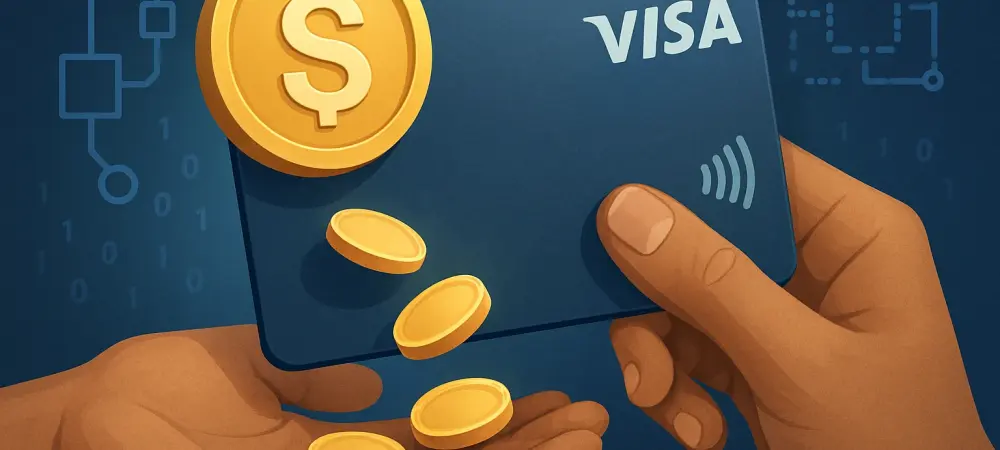Meet Nicholas Braiden, a trailblazer in the fintech world and an early adopter of blockchain technology. With a passion for harnessing financial technology to revolutionize digital payments and lending systems, Nicholas has spent years advising startups on how to innovate and thrive in this dynamic industry. Today, we dive into his insights on a groundbreaking development in the fintech space: the Visa Direct Stablecoin Payouts Pilot. Our conversation explores the potential of stablecoin payouts to transform global money movement, the benefits for creators and gig workers, and the role of blockchain in creating faster, more accessible financial systems.
What inspired the concept behind the Visa Direct Stablecoin Payouts Pilot, and what’s its core purpose?
The core idea behind this pilot is to make money movement faster and more inclusive, especially for those who face barriers with traditional payment systems. It allows businesses to send payouts directly to recipients’ stablecoin wallets, often in USD-backed stablecoins like USDC. The purpose is to provide near-instant access to funds, bypassing the delays of bank transfers or card payments, and to offer a stable store of value, which is critical in regions with currency volatility or limited banking access.
How does this pilot address some of the biggest pain points in the current global payment landscape?
Traditional payouts often involve long waiting times, high fees for cross-border transactions, and dependency on banking infrastructure that isn’t available to everyone. This pilot tackles those issues head-on by leveraging stablecoins for near-instant transfers, reducing costs, and enabling access for people without traditional bank accounts. It’s a game-changer for ensuring money gets where it’s needed, when it’s needed, regardless of location or banking status.
Who do you see as the primary beneficiaries of stablecoin payouts, and why?
Creators, freelancers, and gig workers stand out as key beneficiaries because they often rely on quick access to funds to sustain their livelihoods. Additionally, people in underbanked regions or areas with unstable currencies benefit immensely since stablecoins offer a predictable value tied to the USD. This also helps international businesses and marketplaces that need efficient ways to pay workers across borders without the friction of currency exchange or banking delays.
Can you explain what makes stablecoin payouts a faster and more reliable option compared to traditional methods?
Stablecoin payouts cut out much of the middleman process inherent in bank transfers or card payments. Transactions happen on blockchain networks, which operate 24/7 and settle almost instantly, unlike banking systems constrained by business hours or cross-border processing times. Plus, the USD peg of stablecoins provides recipients with confidence that the value of their funds won’t fluctuate wildly before they can use or convert them.
In what ways does this pilot expand financial access for people globally, especially in underserved markets?
It breaks down significant barriers by allowing anyone with a compatible stablecoin wallet to receive funds, no bank account required. This is huge for underserved markets where banking infrastructure is limited or where opening a USD account isn’t an option. The pilot has the potential to make a big impact in regions with high mobile penetration but low banking access, enabling direct, borderless transactions that empower individuals financially.
How does the process work for businesses looking to send payouts through this system?
Businesses using Visa Direct can fund these payouts in fiat currency, which is a big plus since they don’t need to hold stablecoins themselves. The system converts and sends the funds as stablecoins to the recipient’s wallet. Recipients typically need to meet standard compliance checks like KYC and AML to ensure security and regulatory alignment, but the process is designed to be seamless for both the sender and receiver.
What unique advantages does blockchain technology bring to this pilot?
Blockchain adds a layer of transparency and security that’s hard to match with traditional systems. Every transaction is permanently recorded, which supports auditability and compliance while giving users confidence that their funds are trackable. It also reduces the risk of errors or fraud since the decentralized nature of blockchain ensures data integrity, making the entire payout process more trustworthy for businesses and recipients alike.
How does this pilot tie into the earlier stablecoin pre-funding initiative announced at Sibos 2025?
The pre-funding initiative focused on the backend, allowing businesses to hold stablecoins for funding payouts, which streamlines treasury operations. This new pilot takes it a step further by enabling end recipients to receive funds directly in stablecoins. They’re complementary—pre-funding optimizes the business side, while direct payouts enhance the consumer experience. Together, they’re building a more cohesive stablecoin ecosystem for global payments.
What kind of response have you observed from businesses and platforms regarding this pilot so far?
There’s been a lot of excitement, especially from industries like the gig economy, creator platforms, and international marketplaces that deal with frequent cross-border payments. These sectors see the value in faster, cheaper transactions and are eager to adopt solutions that improve user satisfaction. We’re working with select partners now, but the interest is growing as more businesses recognize the potential to differentiate themselves with this technology.
Looking ahead, what’s your forecast for the role of stablecoins in the future of digital payments?
I believe stablecoins are poised to become a cornerstone of digital payments over the next decade. They solve critical issues like speed, cost, and accessibility, which are non-negotiable in a world that’s increasingly digital and borderless. As regulatory frameworks evolve and adoption grows, I expect stablecoins to integrate seamlessly into mainstream financial systems, bridging the gap between traditional finance and the digital economy in ways we’re only beginning to imagine.

